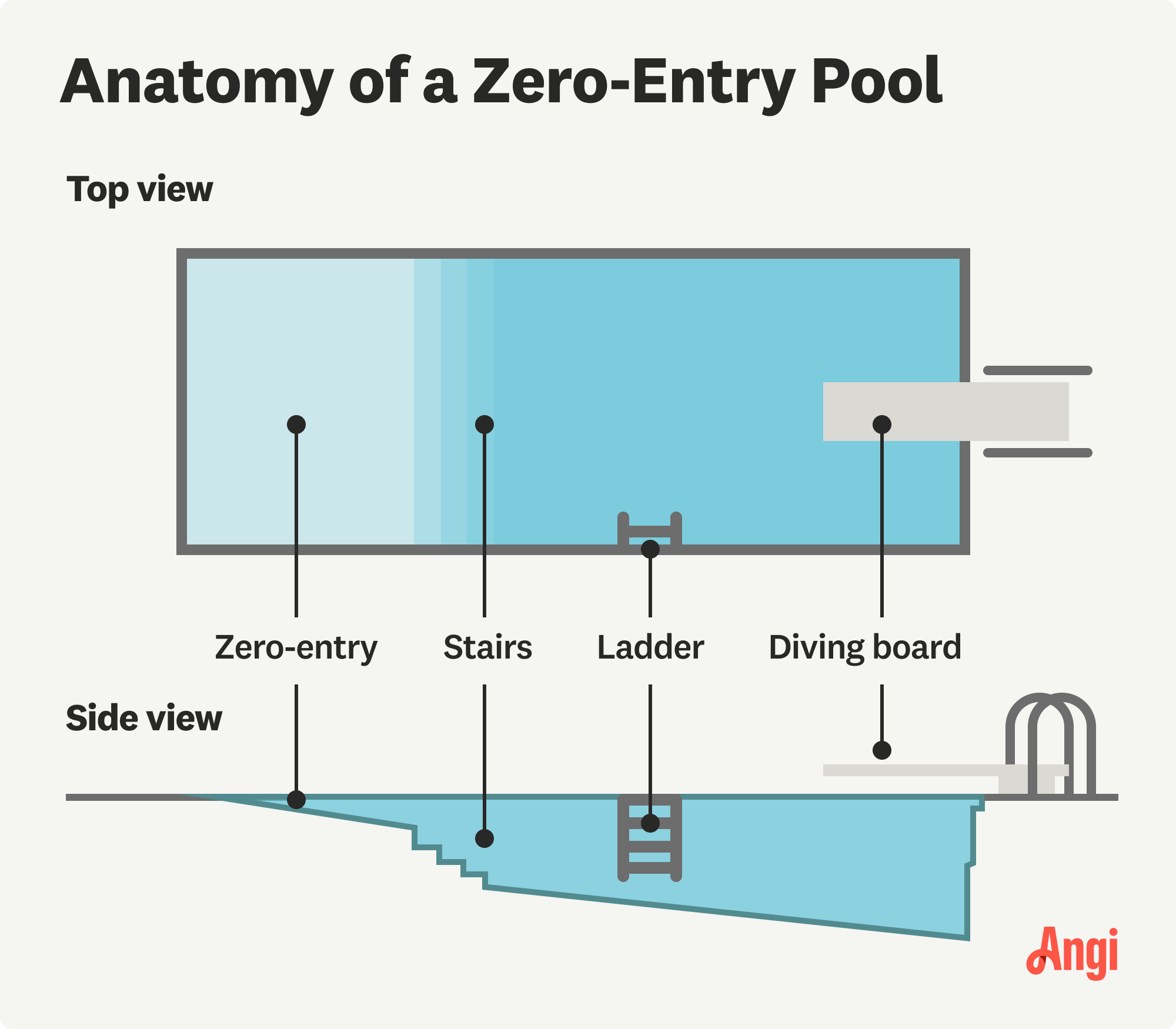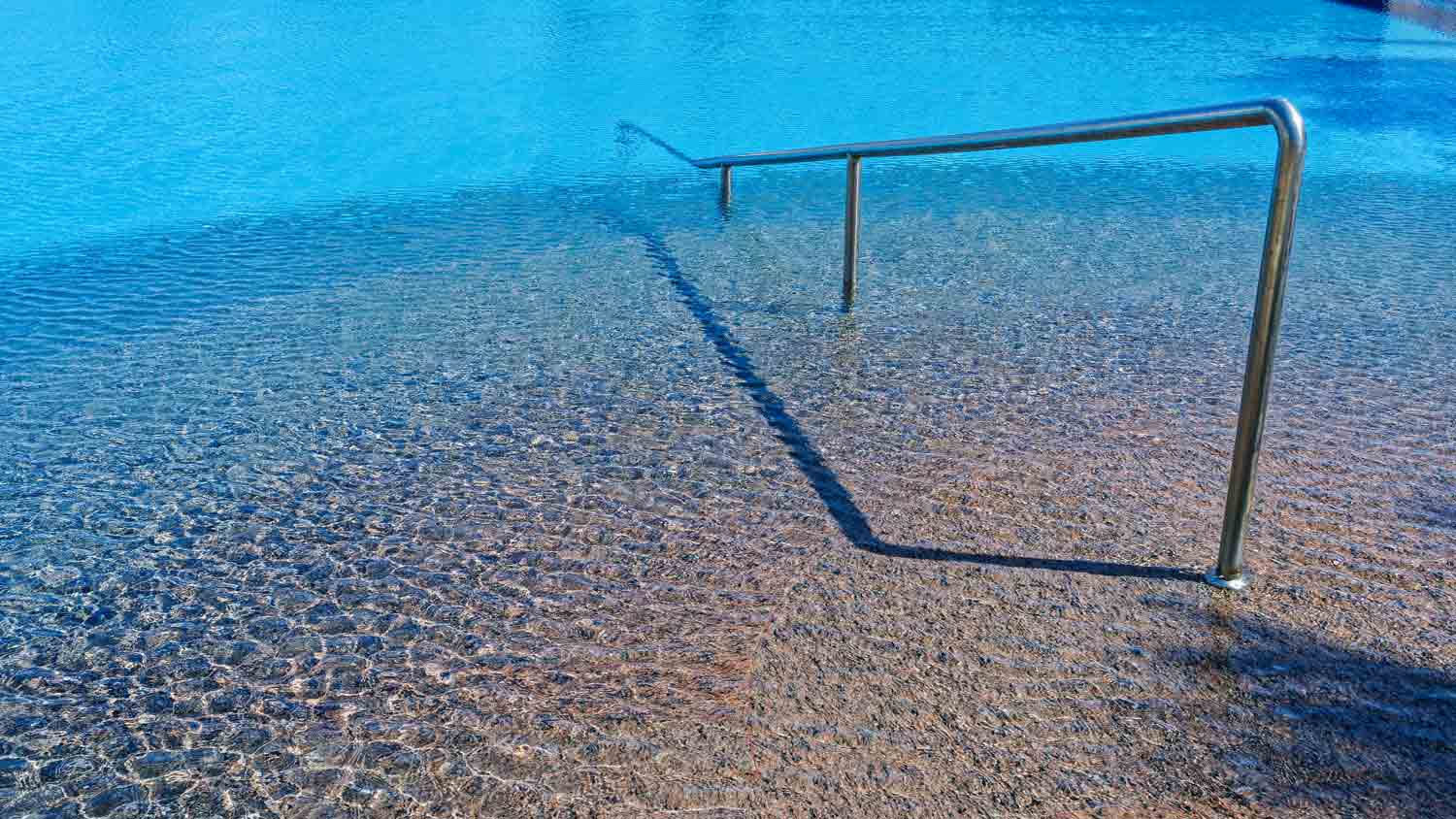What Is a Zero-Entry Pool and Is It Right for You?
Bring the beach to your backyard


Zero-entry pools offer a gradual way to enter and exit the pool, which is useful for those who can’t access it via the stairs or ladder.
While zero-entry pools don’t require much additional maintenance, you’ll need to keep the slope free of debris.
Zero-entry pools can cost 20% more than a traditional in-ground pool.
If you want to install a pool that’s accessible to everyone, look no further than a zero-entry pool. The sloping edge makes it easier to enter and exit and brings the feel of the beach to your own backyard. Let’s take a closer look at what a zero-entry pool is and whether it’s a good fit for your home.
What Is a Zero-Entry Pool?

A zero-entry pool features a gentle slope on at least one side, allowing swimmers to enter the pool gradually. This mimics the feeling of entering an ocean or a lake from a beach. Zero-entry pools have many of the same pros and cons as traditional pools, but there are some additional considerations to take into account. A pool contractor can let you know if a zero-entry pool is feasible in your yard and how much it will cost.
Zero-Entry Pool Pros
Zero-entry pools are a great choice for anyone who may find it difficult to get in or out of the pool using stairs, ladder, or steps. Because this type of pool doesn’t have a drop-off on the zero-entry end, it’s much easier for people to enter the pool. It can also be a safer area for children to play because they can only go in as far as they—or their parents—are comfortable.
The best part of a zero-entry pool is that you can combine various ways to enter the water. You can still have a ladder leading to deeper areas or stairs installed slightly further into the pool to aid in getting into deeper water. And, of course, you can also install a diving board or slide for more ways to get into the pool.
Zero-Entry Pool Cons
Even with all of their benefits, zero-entry pools come with some cons, namely the costs resulting from the additional work to create the gently sloped entry point. An in-ground pool costs between $45,000 and $88,000, and the zero-entry version can fall in the higher end of the range.
Another issue with zero-entry pools is their size. The slope requires quite a bit of space to gain depth, so a larger pool may be necessary to create the effect. You’ll need enough space to accommodate the size of the new pool.
DIY vs. Hiring a Pro

Installing an in-ground swimming pool requires substantial knowledge of how to excavate the area, meet building code requirements, and ensure that all electrical and plumbing are installed correctly. This is why pool installation is a job for a local in-ground pool installer, especially if you plan on installing a zero-entry pool.
A pro can accurately estimate the overall cost of the project and account for special considerations associated with zero-entry pools, including additional planning, equipment, and adherence to building code requirements.
Frequently Asked Questions
Yes, zero-entry pools are also referred to as beach-entry pools because the gentle slope leading to the water mimics the natural slope of a sandy shore leading to a lake or ocean. You can bring in sand or pebbles to truly capture the beach-like feel of a zero-entry pool.
Zero-entry pool maintenance is similar to regular pool maintenance with a few exceptions. For instance, if you use a cleaning robot to keep the pool clean, you’ll need to buy one with a zero-entry sensor or figure out how to keep it from escaping via the zero-entry slope. You’ll also need to make sure the slope is clean and doesn’t get slippery.





- Swimming Pool Installation
- Pool Liner Replace & Install Companies
- Above Ground Pool Contractors
- Pool Remodeling Companies
- Inground Pool Companies
- Pool Removal Companies
- Inground Pool Repair Companies
- Sauna Companies
- Hot Tub Companies
- Sauna Repair
- Fiberglass Pools
- Pool Designers
- Pool Pump Repair
- Pool Closing Services
- Solar Pool Heater Installers










